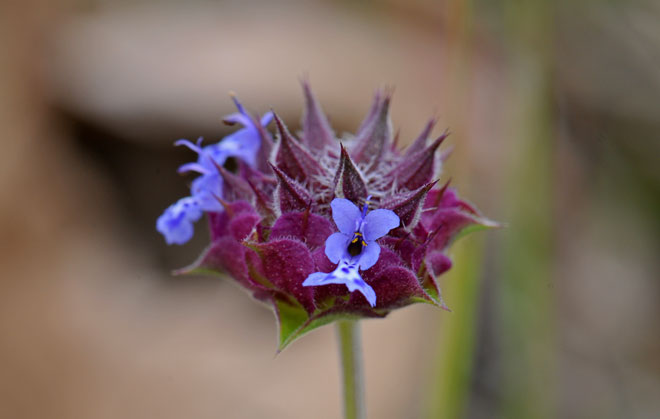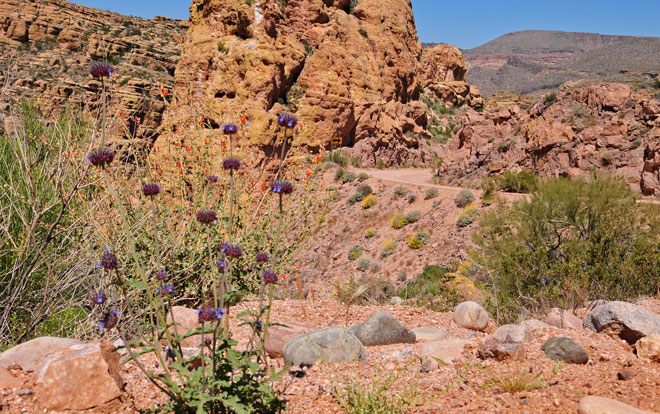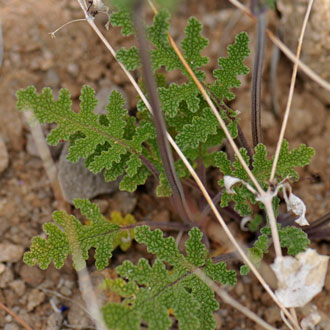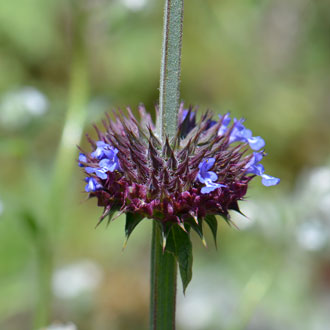Salvia columbariae, Chia





Scientific Name: Salvia columbariae
Common Name: Chia
Also Called: Chia Sage, Desert Chia, Golden Chia (Spanish: Chía, Salvia, Hisopo, Romerillo)
Family: Lamiaceae or Mint Family
Synonyms: ()
Status: Native
Duration: Annual
Size: Up to 1 ½ feet or more.
Growth Form: Forb/herb; hairs sparse short and stiff.
Leaves: Green; mostly basal, 1 or 2 pinnately dissected, lobes irregularly rounded, up to 3½ or 4 inches long with small stiff hairs.
Flower Color: Blue or purple-tipped; flowers in 1 or 2 clusters, inflorescence scapose (elongated peduncle); fruit a nutlet.
Flowering Season: March to May; blooms later in California and Texas (June).
Elevation: Below 3,500 feet.
Habitat Preferences: Common in sandy washes; in California found in disturbed sites; chaparral and coastal-sage scrub.
Recorded Range: In the United States Salvia columbariae is found in AZ, CA, NM, NV and UT. It is most heavily populated in Arizona, California and Nevada. It is also native to Baja California and northern Mexico.
North America & US County Distribution Map for Salvia columbariae.
U.S. Weed Information: No information available.
Invasive/Noxious Weed Information: No information available.
Wetland Indicator: No information available.
Threatened/Endangered Information: No information available.
Genus Information: Above 90 species in Salvia in the United States. 16 species in Arizona, about 24 species in California and about 16 species in New Mexico.
There are 3 varieties in Salvia columbariae;
Salvia columbariae var. argillacea, Chia (extreme southern UT only);
Salvia columbariae var. columbariae, Chia (see Range Recorded above);
Salvia columbariae var. ziegleri, Ziegler's Sage (California only).
The Plant List includes 2,211 scientific plant names of species rank for the genus Salvia. Of these 986 are accepted species names.
Comments: Chia does not generally resemble other more "typical" members of the genus Salvia. In Southwest Desert Flora also see; Autumn Sage, Salvia greggii and Sawtooth Sage, Salvia subincisa.
Also see in Southwest Desert Flora; Autumn Sage, Salvia greggii and Sawtooth Sage, Salvia subincisa.
Chia has been used as a disinfectant and as eye medicine by North American indigenous peoples. See ethno-botanical uses at Native American Ethnobotany, University of Michigan, Dearborn.

